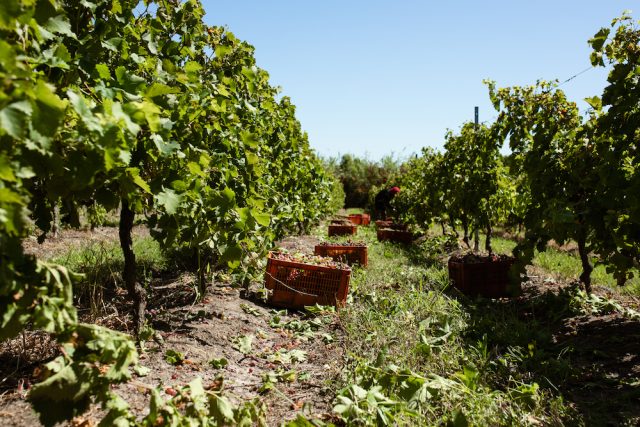This website uses cookies so that we can provide you with the best user experience possible. Cookie information is stored in your browser and performs functions such as recognising you when you return to our website and helping our team to understand which sections of the website you find most interesting and useful.
Uruguay’s harvest 2024: Challenging but good for fresh Tannat and stellar whites
Amanda Barnes reports on the latest harvest in Uruguay and how the weather played a critical role for the success, and failure, of certain regions.

“There’s no normal for Uruguay,” says veteran winemaker, Eduardo Boido of Bodega Bouza, “and 2024 was unlike any previous vintage I’ve experienced.”
Vintage 2024 was a year of mixed blessings. It started with a cool spring and relatively dry, cool summer, which led to slow ripening and sugar accumulation — a boon for excellent white wines and early-ripening reds.
“The Albariño was fantastic this year, but what really stood out for me was the Chardonnay and Pinot Noir,” says Familia Deicas winemaker, Santiago Deicas. “I think this is probably the best vintage I have ever seen of these varieties!”
The slow ripening and late season, however, spelt trouble for later-ripening varieties and regions as an enormous rain storm swept through the country in mid-March, while many grapes were still on the vine.
“In a normal year, we wouldn’t have had much left on the vines by mid-March, but because it was such a late vintage almost everyone still had some grapes on the vines, which was a problem,” adds Deicas.
An average of 350 mm of rain fell in one week. And it didn’t get much better, with horrendous rain at the end of the month causing flooding throughout the country — displacing nearly 6,000 people.
The end of the vintage was all about good management and quick responses in the vineyard, as well as soil type.
“For the parcels that remained in Pan de Azúcar [Maldonado], we were still able to harvest and make wine, as the soils drain very well,” adds Boido. “However, Canelones and Montevideo, where we had the highest rainfall, had problems with the clay soil. There were some parcels we didn’t vinify this year.”
Despite the challenges and part of the yield lost to botrytis attacks post-rainfall, the quality of this year’s Tannat is promising. “The Tannat actually did very well,” comments Deicas.
“Obviously the Tannat we picked before the rain was great, but even after the rains, in the areas with well-draining soils, we have some excellent quality. This will be a vintage where the differences in regions really show in the glass. Although in general, the Tannat wines have fresh, primary fruit aromas and more floral aromas with herbal notes, rather than the mature fruit aromas from last year. We also have high acidity with low abv, and this will be a vintage that ages very well.”
This year Uruguay celebrates its 150th vintage working with Tannat, first planted in 1874 by Pascual Harriague. On 14th April, the country is celebrating its annual Tannat Day, in honour of the day Harriague was born.
Amanda Barnes is the drinks business´ regular South America correspondent and author of The South America Wine Guide .

